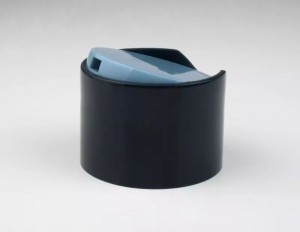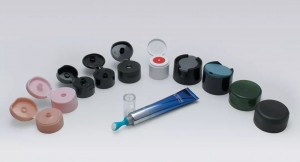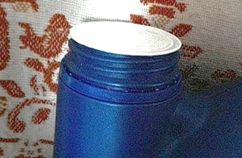Cosmetic packaging materials, whether it is a glass bottle container, a plastic container such as a PET bottle, an acrylic bottle, or a hose container, need to be taken out through a removal tool such as a bottle cap or a pump head. In case of leakage, the sealing between the cap and the container is very critical. In this article, we briefly describe the sealing principle of the cap and the mouth of the bottle.This article is organized by shanghai rainbow package for your reference
一、Basic knowledge of sealing
1. Bottle cap and bottle mouth
The bottle cap and the bottle mouth meet the following requirements through a certain connection and cooperation form:
Through the connection and cooperation between the bottle cap and the bottle mouth, the bottle cap is fixed on the bottle mouth, and can be opened or covered in a certain way;
Provide sufficient pressure for the sealing contact surface, and the pressure should be evenly distributed, and the pressure should be kept constant before the container is opened or for a longer period of time;
For the bottle cap structure without lining, the sealing part in contact with the bottle mouth should be smooth, uniform and in good contact;
Opening and covering are easy, fast and leak-free.
2. Bottle caps and sealing linings
In order for the sealing liner to be accurately pressed against the sealing contact surface, the sealing liner should be accurately positioned in the bottle cap and of the right size.
3. Seal the lining and the bottle mouth
The matching design of the sealing liner and the bottle mouth needs to determine the contact mode, contact area, contact width and thickness of the sealing liner to ensure sufficient elasticity and necessary rigidity requirements.
02. Sealing principle
It is to set up a perfect physical barrier for a bottle mouth that may leak (gas or liquid contents) or intrusion (air, water vapor or impurities in the external environment, etc.) and should be sealed. To achieve this, the liner must be elastic enough to fill any unevenness on the sealing surface, while remaining rigid enough to prevent it from being squeezed into the surface gap under sealing pressure. Both elasticity and rigidity must be persevered.
In order to obtain a good sealing effect, the inner liner pressed against the sealing surface of the bottle mouth must maintain sufficient work pressure during the shelf life of the package. Within a reasonable range, the higher the pressure, the better the sealing effect. However, it is obvious that when the pressure is increased to a certain level, it will cause the cracking or deformation of the bottle cap, the cracking of the glass bottle mouth or the deformation of the plastic container and the damage of the inner lining, so that the seal will fail by itself.

The sealing pressure ensures good contact between the liner and the sealing surface of the bottle mouth. The larger the sealing area of the bottle mouth, the larger the area distribution of the load applied by the bottle cap, and the worse the sealing effect under a certain torque. Therefore, in order to obtain a good seal, it is not necessary to use an excessively high fixing torque, and the width of the sealing surface should be as small as possible without damaging the liner and its surface. That is to say, if the small fixing torque is to achieve the maximum effective sealing pressure, a narrow sealing ring should be selected.
03. Conventional sealing method
1. Thread engagement
Thread engagement refers to the number of thread turns from the first engagement point between the starting point of the thread of the screw cap and the starting point of the thread of the bottle mouth to the point where the sealing surface of the bottle mouth is in contact with the inner liner. In order for the liner to be evenly pressed against the entire circumference of the sealing surface of the bottle finish, at least one full turn of the thread engagement is required. The larger the area of thread engagement, the better the cap positioning and the greater the effect of the holding torque holding the cap in place. The pitch determines the inclination or slope of the thread. The greater the pitch, the greater the thread slope, the faster the cap is screwed on or off, and the greater the height of the cap to obtain a certain number of thread engagement. Therefore, the pitch is appropriate, and there is no need to choose an excessively large pitch, so as not to affect the appearance of the shape and increase the production cost
2. Fixed torque
Once the cap and mouth structure is determined, the requirement for a good seal is easily resolved. The question comes down to ensuring that the cap applies the proper pressure to the mouth of the bottle. In the case of screw caps, there is a measure of how well the cap works – the fixing torque. The holding torque can be measured with a torque tester. In practice, since the torque tester cannot be placed under the head of the capping machine, it must be measured by the “unscrewing torque” applied by the tester to the cap. The fixing torque varies with the diameter of the cap and is proportional. The reliability of the cap seal depends on the elasticity of the liner, the smoothness of the sealing surface, etc., not just its tightness or the applied torque.
04. Reference for other types of cap seals
1. The edge of the bottle mouth is sealed
The sealing surface of the bottle mouth edge seal is on the upper outer edge of the bottle mouth. A natural or synthetic rubber gasket is placed on the edge of the metal lug cap, which fits with the tapered sealing surface on the upper part of the outer edge of the bottle mouth, and is mainly sealed by the pressure exerted by the bottle mouth flange.
2. Joint seal
Joint sealing is the double sealing of the sealing surface on the bottle mouth and the sealing surface on the edge of the bottle mouth. The technical requirements of joint sealing are relatively high
3. Plug seal
The plug seal is a seal formed by friction between the plugs made of various materials and the sealing surface of the inner edge of the plug-shaped bottle mouth by press-fitting. There are cork stoppers, plastic stoppers, glass stoppers, etc. Because cork is elastic, compressible, airtight, watertight, and has low thermal conductivity, it provides a good stopper seal and is an ideal natural material. As an alternative to cork stoppers, there are concave plastic stoppers with or without ribs, and there are ring skirt plastic races that adapt to the gradual change in the diameter of the bottle opening, all of which can ensure a more effective stopper.
Shanghai rainbow industrial co.,ltd provides one-stop solution for cosmetic packaging.If you like our products, you can contact us,
Website:
www.rainbow-pkg.com
Email: Bobby@rainbow-pkg.com
WhatsApp: +008613818823743
Post time: Feb-22-2022



